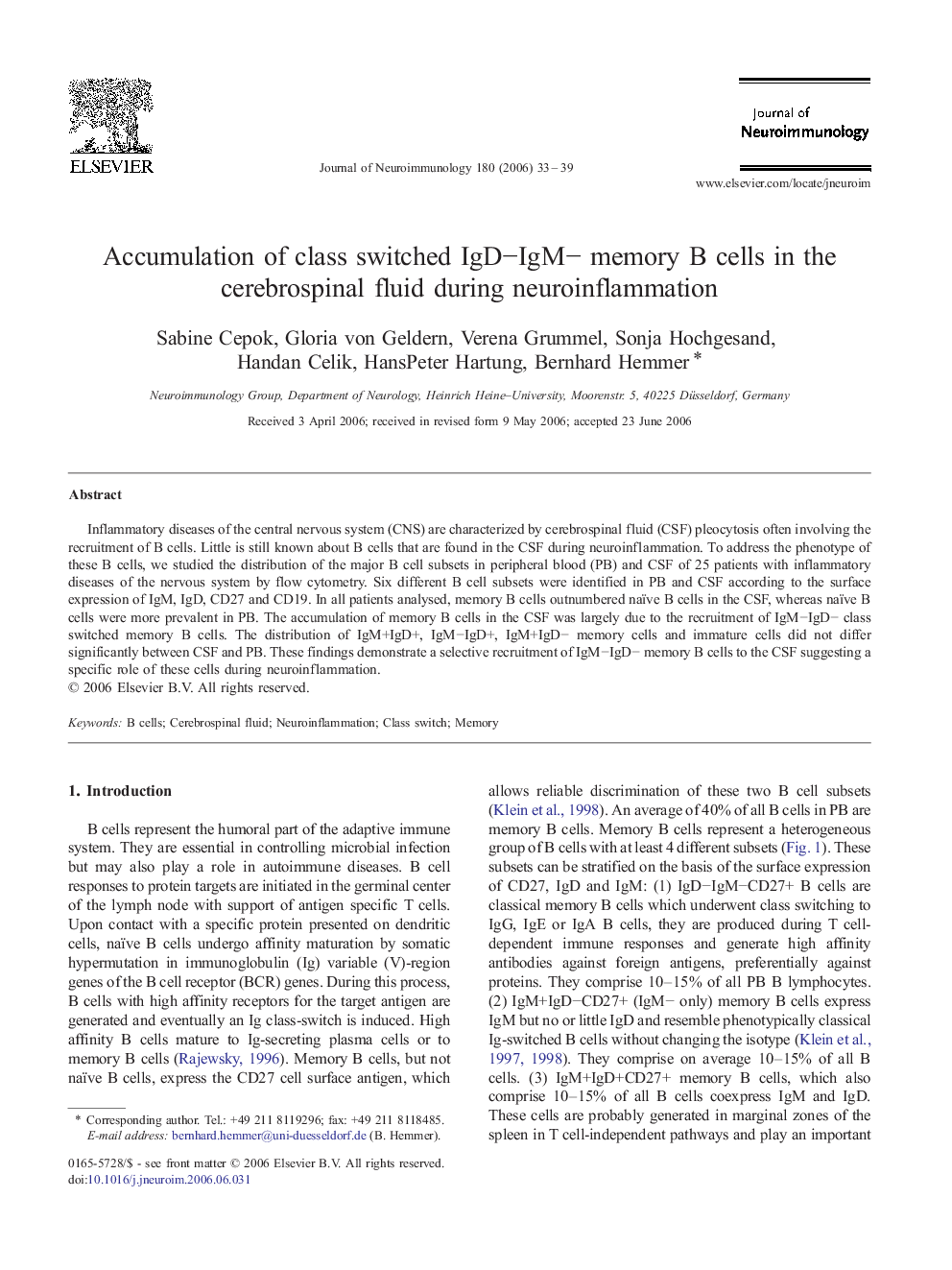| Article ID | Journal | Published Year | Pages | File Type |
|---|---|---|---|---|
| 3065437 | Journal of Neuroimmunology | 2006 | 7 Pages |
Inflammatory diseases of the central nervous system (CNS) are characterized by cerebrospinal fluid (CSF) pleocytosis often involving the recruitment of B cells. Little is still known about B cells that are found in the CSF during neuroinflammation. To address the phenotype of these B cells, we studied the distribution of the major B cell subsets in peripheral blood (PB) and CSF of 25 patients with inflammatory diseases of the nervous system by flow cytometry. Six different B cell subsets were identified in PB and CSF according to the surface expression of IgM, IgD, CD27 and CD19. In all patients analysed, memory B cells outnumbered naïve B cells in the CSF, whereas naïve B cells were more prevalent in PB. The accumulation of memory B cells in the CSF was largely due to the recruitment of IgM−IgD− class switched memory B cells. The distribution of IgM+IgD+, IgM−IgD+, IgM+IgD− memory cells and immature cells did not differ significantly between CSF and PB. These findings demonstrate a selective recruitment of IgM−IgD− memory B cells to the CSF suggesting a specific role of these cells during neuroinflammation.
